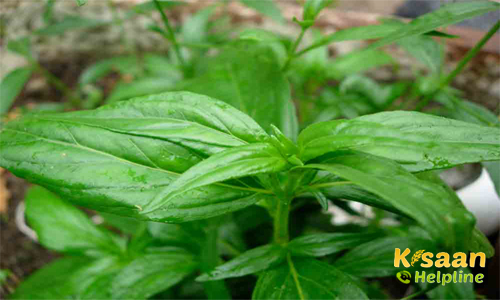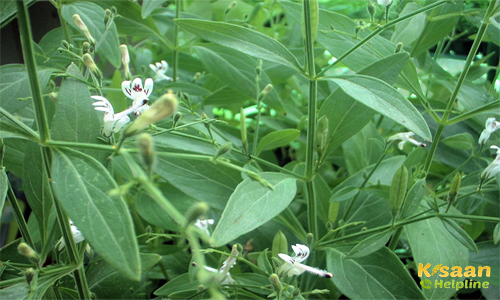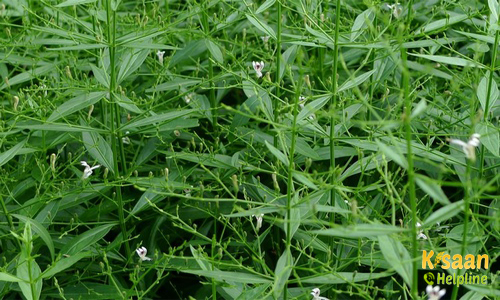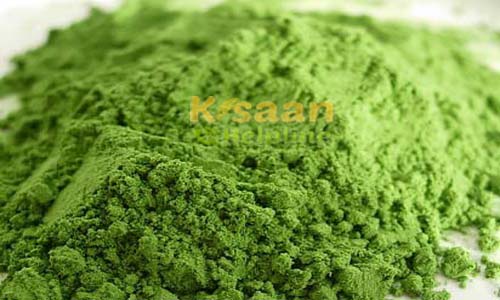Kalmegh (कालमेघ)
Kalmegh (कालमेघ) भारत में एक महत्वपूर्ण औषधीय जड़ी बूटी है और यह व्यापक रूप से hepatoprotective, immunomodulator, विरोधी के रूप में प्रयोग किया जाता है - भड़काऊ, विरोधी - मलेरिया, विरोधी अतिसार और श्वसन और हृदय प्रणाली पर लाभकारी प्रभाव के साथ।
Name of Variety: Kalmegh (कालमेघ)
Common Names: Kirayat, Hara-chiretta, Kalpnath.
Crops Season: During Monsoon
Yield: मानसून के अच्छे मौसम के दौरान फसल की अच्छी पैदावार ली जा सकती है लगभग 3.5-4.0 टन (ड्राइड हर्ब) पैदावार प्रति हेक्टेयर!
Area of Cultivation (State): यह व्यापक रूप से भारत के मैदानी इलाकों में बोया जाता है जैसे असम, उत्तर प्रदेश, मध्य प्रदेश, तमिलनाडु और केरल।
It is widely planted in the plains of India, Assam, Uttar Pradesh, Madhya Pradesh, Tamil Nadu and Kerala.
Need of Water: Rain 2-3 irrigations (सिंचाई) are required
Distribution: Kalmegh विशेष रूप से भारत के दवरा खोजी गयी एक वार्षिक जड़ी बूटी है। इसकी भारत के कई राज्यों में खेती होती है।
Useful parts: Whole plant.
Cultivation: In India, it is cultivated as rainy season (Kharif) crop. Any soil having fair amount of organic matter is suitable for commercial cultivation of this crop. About 400 gms. seed are sufficient for one hectare. The spacing is maintained 30 × 15 cm. No major insect and disease infestation has been reported. The plants at flowering stage (90–120 days after sowing) are cut at the base leaving 10–15 cm stem for plant regeneration. About 50–60 days after first harvest, final harvest is performed. In Indian condition, the yield varies between 2000–2500 Kg dry herb per hectare.
Chemical Constituents: Kalmegh contains bitter principles andrographolide, a bicyclic diterpenoid lactone and Kalmeghin (upto 2.5%). The leaves contain the maximum active principle content while in the stem it is in lesser amount.
SOIL AND CLIMATE
It can be cultivated on wide range of soils from loam to lateritic soils with moderate
IRRIGATION
Fairly distributed rainfall during monsoon is sufficient to raise annual crop in Northern states. But prior to rain 2-3 irrigations are required. Irrigation during autumn does not show much effect on biomass yield as by that time plant is in reproductive phase.
HARVESTING/POST HARVESTING OPERATION
Maximum herb biomass can be obtained in 90-100 days beyond which leaves start Shedding. If crop is raised as annual crop and planted during the month of May June, it should be harvested by the end of the September when flowering is initiated. At the time of flower initiation, active principle andrographolide is high in leaves. Since the whole plant contains active principles, entire harvested material is dried in shade and powdered.




